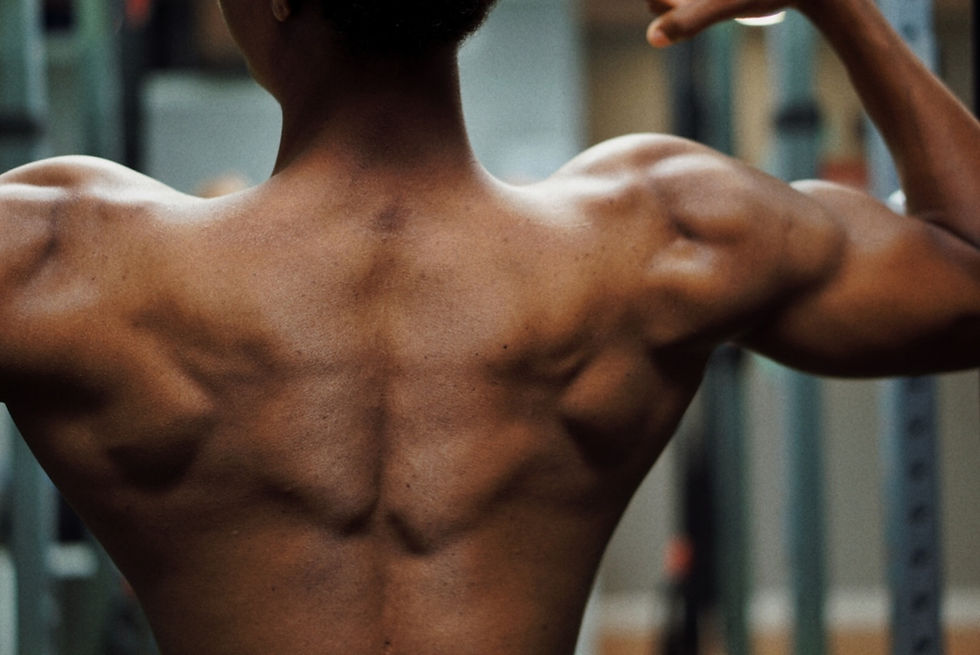Your shoulder is a complex joint made up of bones, muscles, tendons, and ligaments. It’s one of the most mobile joints in your body, which makes it susceptible to injury. Shoulder pain is a common problem that can be caused by a number of different conditions.
There are many different types of shoulder injuries, and the best way to treat them depends on the specific condition. It’s important to see a doctor if you’re experiencing shoulder pain, so they can diagnose the underlying cause and recommend the best course of treatment.
In this article, we’ll discuss the different types of shoulder injuries and how to treat them.

Anatomy of the shoulder
The shoulder is a ball-and-socket joint that allows a wide range of motion. The ball is the head of the humerus (upper arm bone) and the socket is formed by the scapula (shoulder blade). There are two main types of movements at the shoulder:
1. Gliding movements - these allow the head of the humerus to move within the socket. This type of movement is necessary for activities such as reaching and scratching.
2. Rotational movements - these allow the head of the humerus to rotate within the socket. This type of movement is necessary for activities such as throwing and swimming.
The shoulder is stabilized by a number of muscles, ligaments, and tendons.
The rotator cuff muscles include the supraspinatus, infraspinatus, teres minor, and subscapularis. These muscles work together to lift the arm and keep the shoulder joint stable.
Rotator cuff tear
A torn rotator cuff is a common injury that can cause pain and disability. The rotator cuff is a group of muscles and tendons that attach the shoulder blade to the upper arm. These muscles and tendons help lift the arm. A torn rotator cuff can make it difficult to lift the arm, and can cause pain when the arm is used.
There are several treatment options for a torn rotator cuff. The first step is to rest the arm and avoid any activities that aggravate the pain. Ice and over-the-counter pain medications can help reduce inflammation and pain. Physical therapy exercises may also be prescribed to help stretch and strengthen the muscles and tendons around the shoulder. In some cases, surgery may be necessary to repair the damage.
Frozen shoulder
Frozen shoulder is a condition that affects the shoulder joint. The shoulder joint is a ball-and-socket joint, which means it allows the arm to move in a wide range of motions. This range of motion is possible because the shoulder joint is supported by a network of muscles, ligaments, and tendons.
Frozen shoulder occurs when this network of tissues becomes inflamed or damaged, causing the shoulder joint to freeze in place. This can be a painful and debilitating condition, making it difficult to perform everyday activities.
There are a few key things you should know about frozen shoulder. First, it is a condition that can affect anyone, though it is most common in adults aged 40-60. Secondly, frozen shoulder often develops after a shoulder injury or surgery.
Shoulder dislocation
Shoulder dislocations are a relatively common injury, particularly in young athletes. The shoulder is a ball-and-socket joint, and the ball (called the humeral head) is held in place by a group of muscles, tendons, and ligaments. These structures can be stretched or torn, allowing the humeral head to dislocate from the socket.
Dislocations can be extremely painful and can cause loss of function in the arm. If you suspect you have a dislocated shoulder, it is important to seek medical attention as soon as possible. Your doctor will conduct a physical examination and may order x-rays or other imaging tests to confirm the diagnosis.
Treatment for a dislocated shoulder typically involves reduction, which is a procedure to put the humeral head back into the socket.

SLAP tear
A SLAP tear is a tear in the labrum, the cartilage that surrounds the shoulder socket. SLAP stands for Superior Labrum, Anterior to Posterior. The tear can occur from injury or overuse and is a common source of shoulder pain.
Symptoms of a SLAP tear include pain in the shoulder, weakness in the arm, and a clicking or popping sensation when the arm is moved. The tear may also cause the shoulder to feel unstable.
Treatment for a SLAP tear typically includes rest, ice, and anti-inflammatory medication. Physical therapy may also be recommended to help strengthen the muscles and ligaments around the shoulder. In some cases, surgery may be necessary to repair the tear.
If you think you may have a SLAP tear, it is important to see a doctor for an accurate diagnosis.
Shoulder arthritis
Shoulder arthritis is a common condition that can cause pain and stiffness in the shoulder joint. The symptoms of shoulder arthritis can vary from mild to severe, and the condition can make it difficult to perform everyday tasks.
There are several different types of shoulder arthritis, and the condition can be caused by a variety of different factors. However, the most common type of shoulder arthritis is osteoarthritis, which is caused by the wear and tear of the joint cartilage.
If you think you may have shoulder arthritis, it's important to see a doctor for a diagnosis. There are a variety of treatment options available for shoulder arthritis, and the sooner you start treatment, the better.
There are many common shoulder injuries that can cause pain. The most important factor in treatment is to see an orthopaedic surgeon to get a proper diagnosis. Once the diagnosis is made, the surgeon can develop a treatment plan that is specific to your injury.

Comments